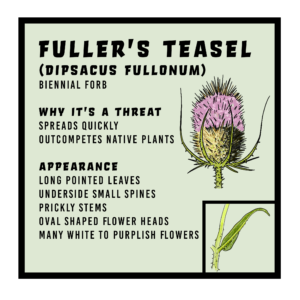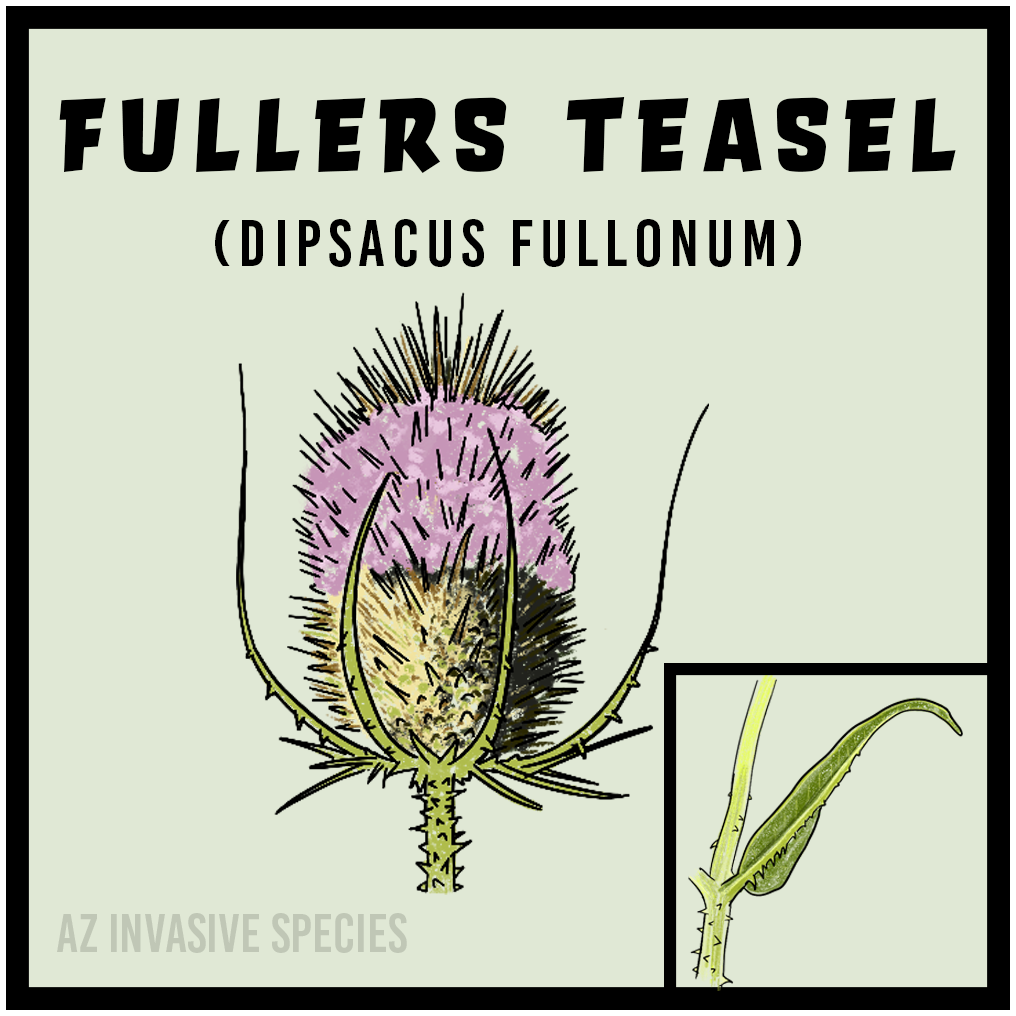 Fuller’s Teasel (Dipsacus fullonum), a striking and yet invasive plant species, has become a growing concern in the southwestern United States. Originally hailing from Europe and Asia, this biennial herbaceous plant has found its way into the region’s landscapes, where it displays a fascinating mix of beauty and ecological disruption.
Fuller’s Teasel (Dipsacus fullonum), a striking and yet invasive plant species, has become a growing concern in the southwestern United States. Originally hailing from Europe and Asia, this biennial herbaceous plant has found its way into the region’s landscapes, where it displays a fascinating mix of beauty and ecological disruption.
One of the most distinctive attributes of Fuller’s Teasel is its architectural elegance. In the first year of growth, it forms a rosette of basal leaves, presenting a low, leafy profile. However, it’s during the second year that Fuller’s Teasel truly reveals its captivating form. The plant sends up towering, spiky flower stalks, which can reach heights of up to seven feet. These flower heads are encircled by sharp, bristle-like structures, creating a visually intriguing display reminiscent of a medieval weapon.
While the appearance of Fuller’s Teasel may be visually appealing to some, its impact on the environment is far less welcome. The plant’s aggressive growth can quickly overtake native vegetation, shading out sun-loving plants beneath its towering flower heads. Its deep taproot allows it to thrive in a variety of soil conditions, including disturbed areas and along riverbanks, further aiding its spread.
Fuller’s Teasel also has an ecological downside as it tends to be a poor host for native wildlife, offering little to no forage or habitat value. This lack of ecological support further contributes to its reputation as an invasive species.
Efforts to manage Fuller’s Teasel often involve herbicide application, manual removal, and proactive monitoring to prevent its establishment in new areas. Raising awareness about the ecological impact of this species is also crucial in addressing its spread.
In the southwestern United States, where native flora and ecosystems are already under pressure from various environmental challenges, Fuller’s Teasel serves as a reminder of the need for proactive conservation and invasive species management to protect the region’s unique biodiversity.

